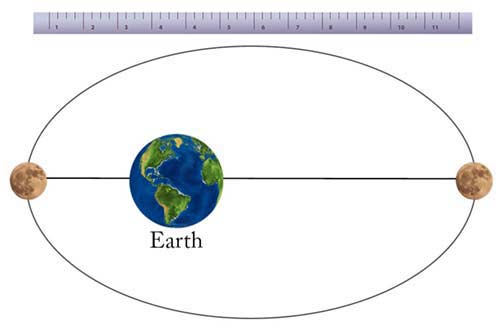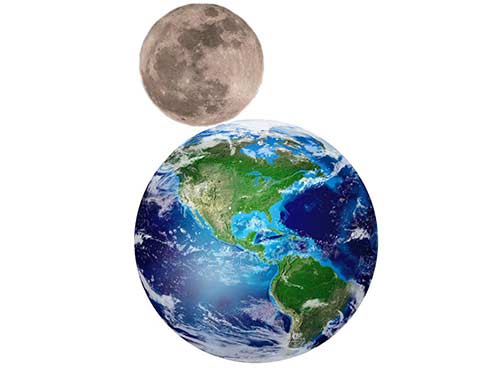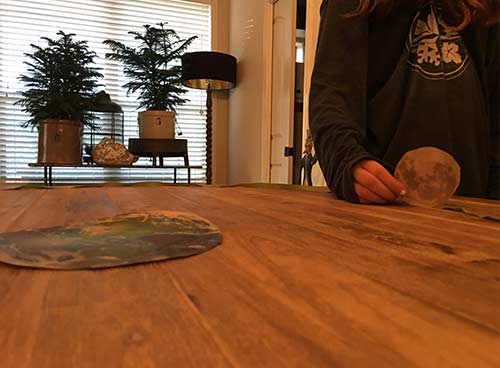Page 9


Why the Supermoon Looks Large
By Ginger Wentrcek
Three of our grandchildren stayed with us for a week during their winter break from school, and we decided to conduct an experiment to see why the upcoming supermoon will look larger than normal as it rises over the horizon.
To begin with, we had to get a few vocabulary words out of the way: circular, elliptical, perigee, and apogee. We talked about the fact that the shape of the moon's orbit is not a perfect circle. It is elliptical in shape, and the moon's distance from Earth constantly varies. We used the worksheet in Figure 1 to measure distances from the moon to the earth to reinforce this concept and the vocabulary words. Download this worksheet. (The orbit, moon, and earth are not to scale.)
Next, the kids printed images of the moon and earth (Figure 2) and cut them out to use in the next part of our activity. Download the earth and moon worksheet. (The images are not to scale.)
They placed the image of the earth on a flat surface and then made an elliptical path with ribbon around it. Each child held the moon and took a turn walking it around the path of the orbit. (Figure 3) Following that, the grandchildren discussed the fact that the moon appeared to be at different distances from the earth as it made its way around the orbit. They also noted that the moon stayed the same size as they held it and moved it around the orbit. The moon was the same size when it was at perigee, the same size at apogee, and the same size at every other location in orbit.
Using an iphone camera, photos of the moon were taken at apogee (Figure 4) and perigee (Figure 5), being careful to keep the camera in the same location. The images were downloaded, printed, and examined for size. (See Figure 6) Since they actually held and moved the moon around the orbit, they knew the moon did not change size. The moon only looked larger at perigee because it was closer to the earth.
To extend the discussion, the kids recalled the trip from their home in Austin, TX, to our home in College Station, TX - a distance of 124 miles from their front door to our front door. They calculated they would have to make the round trip from Austin to College Station 895.33 times in order to travel 222,042 miles, the closest distance from the earth to the moon on January 20.

Figure 1

Figure 2

Figure 3

Figure 4

Figure 5

Figure 6